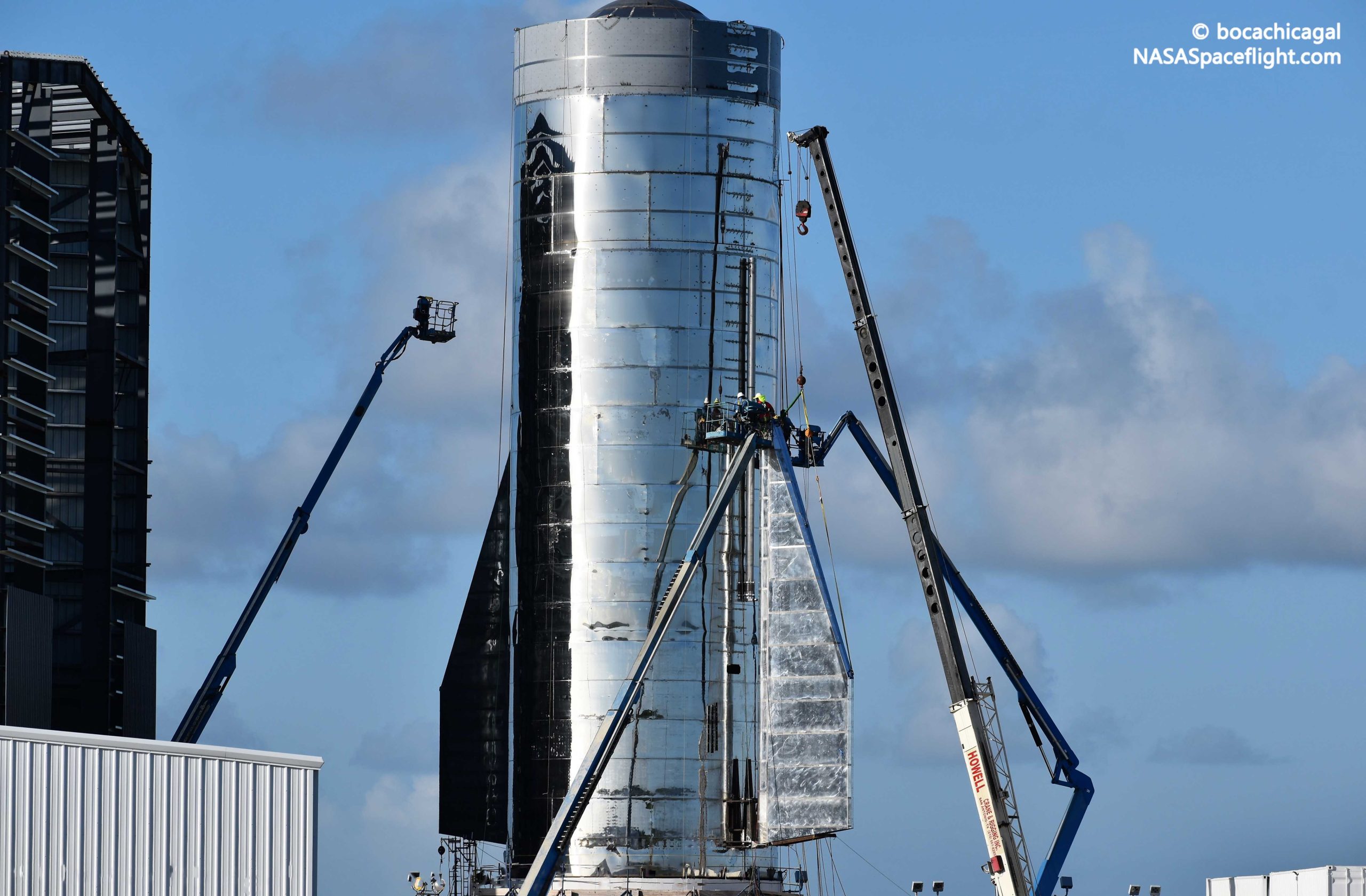
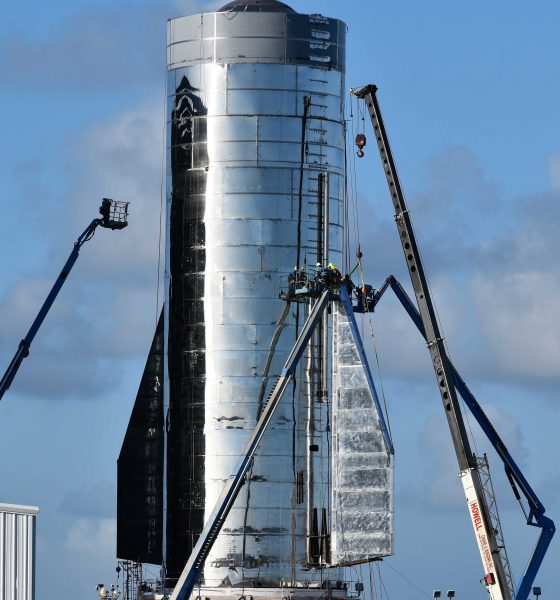
News
SpaceX CEO Elon Musk explains how Starships will return from orbit
In the near future, SpaceX wants to begin putting its first two full-scale Starship prototypes through a series of increasingly challenging test flights, eventually culminating in their first Super Heavy-supported orbital launch attempts.
SpaceX CEO Elon Musk took to Twitter over the last 48 or so hours to answer a number of questions about how exactly Starship is meant to make it through orbital reentries – by far the most strenuous period for the ship and without a doubt the single most challenging engineering problem SpaceX must tackle.
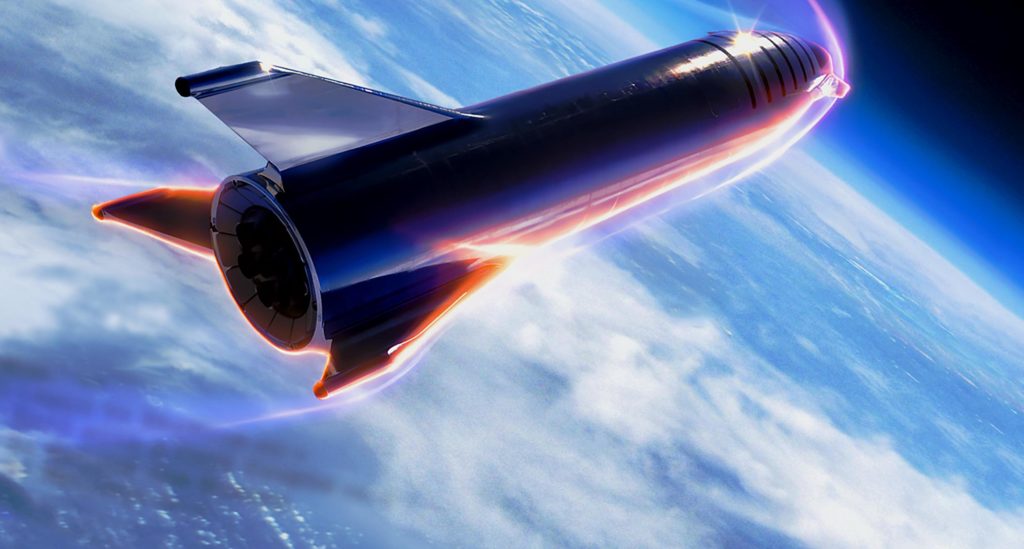
Discussed yesterday on Teslarati, SpaceX technicians began the process of attaching numerous Tesla Model S/X battery packs to a subcomponent that will eventually be installed inside Starship Mk1’s nose, offering a storage capacity of up to 400 kWh. The need for all that power (Crew Dragon relies on a few-kWh battery) is directly related to Starship Mk1’s methods of reentry and recovery, recently described in detail by Elon Musk.
As noted above, ~400 kWh of batteries are needed to power the electric motors that will actuate Starship’s massive control surfaces – two large aft wings and two forward canards/fins. According to Musk, Starship’s “stability is controlled by (very) rapid movement of rear & fwd fins during entry & landing”, meaning that the spacecraft will need to constantly tweak its control surfaces to remain in stable flight.
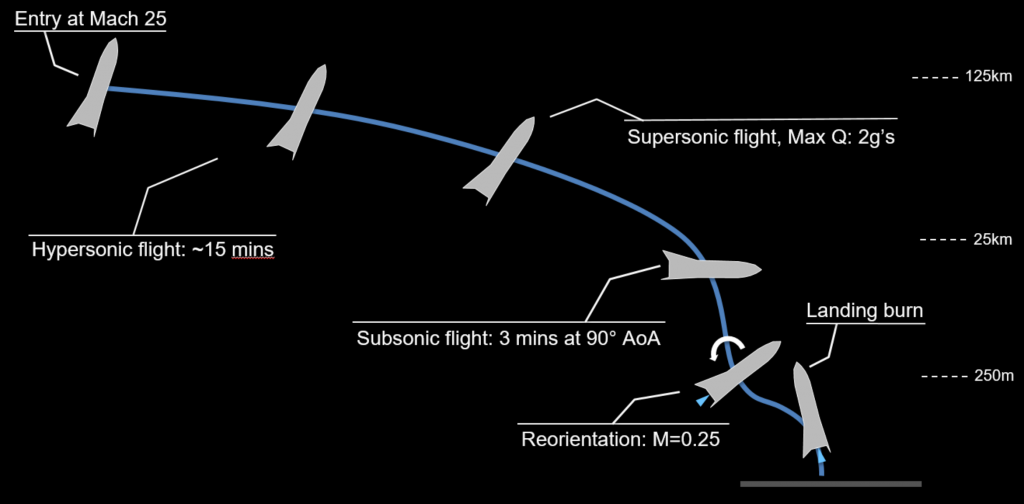
By far the biggest challenge SpaceX faces is ensuring that Starship can survive numerous orbital-velocity reentries with little to no wear and tear, a necessity for Starship to be cost-effective. In Low Earth Orbit (LEO), Starship will be traveling no less than 7.8 km/s (Mach 23, 17,500 mph) at the start of atmospheric reentry. In simple terms, the process of slowing from orbital velocity to landing on Earth involves turning the vast majority of that kinetic energy into heat. As Musk noted yesterday, this reality is just shy of unavoidable but there is some flexibility in terms of how quickly one wants to convert that energy into heat.
The fastest route to Earth would involve diving straight into the atmosphere, dramatically increasing peak heating on a spacecraft’s surface to the point that extremely exotic heat shields and thermal protections systems become an absolute necessity. SpaceX wants to find a middle ground with Starship in which the spacecraft uses its aerodynamic control surfaces and body to generate lift, slowly and carefully lowering itself into Earth’s atmosphere over a period of 15+ minutes. Musk notes that this dramatically lessens peak heating at the cost of increasing the overall amount of energy Starship has to dissipate, a bit like cooking something in the oven at 300 degrees for 30 minutes instead of 600 degrees for 10 minutes.
To an extent, Starship’s reentry profile is actually quite similar to NASA’s now-retired Space Shuttle, which took approximately 30 minutes to go from its reentry burn to touchdown. Per the above infographic, it looks like Starship will take approximately 20 minutes from orbit to touchdown, owing to a dramatically different approach once it reaches slower speeds. Originally described by Musk in September 2018 and again in recent weeks, Starship will essentially stall itself until its forward velocity is nearly zero, after which the giant spacecraft will fall belly-down towards the Earth, using its wings and fins to maneuver like a skydiver. The Space Shuttle landed on a runway like a (cement-encased) glider.
This unusual approach allows SpaceX to sidestep the need for huge wings, preventing Starship from wasting far more mass on aerodynamic surfaces it will rarely need. The Space Shuttle is famous for its massive, tile-covered delta wing and the leading-edge shielding that partially contributed to the Columbia disaster. However, it’s a little-known fact that the wing’s size and shape were almost entirely attributable to US Air Force demands for cross-range performance, meaning that the military wanted Shuttles to be able to travel 1000+ miles during reentry and flight. This dramatically constrained the Shuttle’s design and was never once used for its intended purpose.
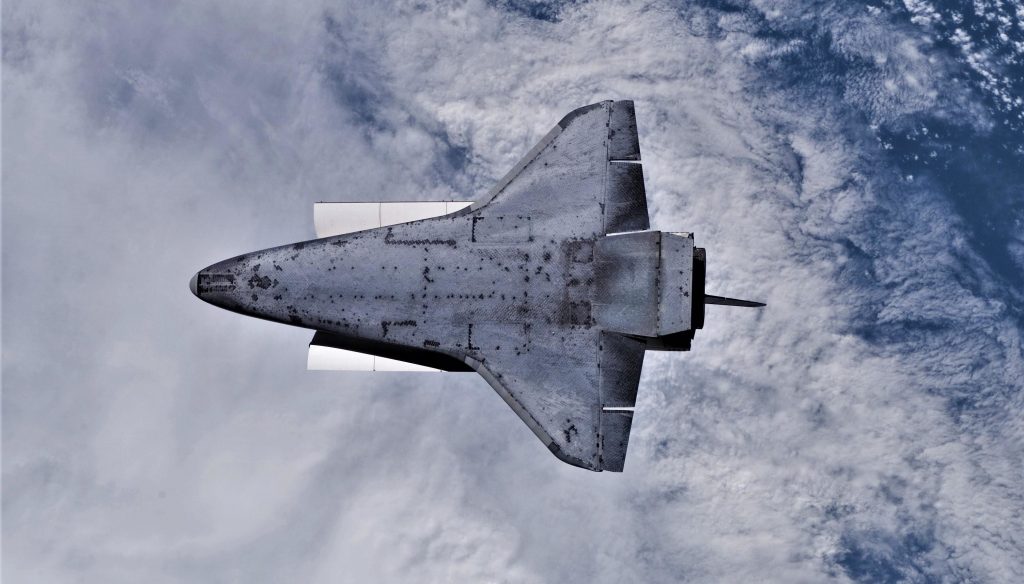
SpaceX thankfully doesn’t have its own “US Air Force” stand-in making highly consequential demands (aside from Elon Musk ?). Instead, Starship will continue the SpaceX tradition of vertical landing, falling straight down – a bit like a skydiver (or a brick) – on its belly and flipping itself over with fins and thrusters for a propulsive vertical landing. In this way, Starship doesn’t have to be a brick forced to fly, like the Shuttle was – it just needs to be able to stably fall and quickly flip itself from a horizontal to vertical orientation.
Additionally, Starship is built almost entirely out of steel, whereas the Shuttle relied on an aluminum alloy and needed thermal protection over every square inch of its hull. Steel melts at nearly twice the temperature of the Shuttle’s alloy, meaning that Starship will (hopefully) be able to get away with nothing more than ceramic tiles on its windward half, saving mass, money, and time. Once Starship completes its first 20 km (12.5 mi) flight test(s), currently scheduled no earlier than mid-October, SpaceX will likely turn its focus on verifying Starship’s performance at hypersonic speeds, ultimately culminating in its first orbital-velocity reentries.
Check out Teslarati’s Marketplace! We offer Tesla accessories, including for the Tesla Cybertruck and Tesla Model 3.

News
Another Tesla Model 3 variant sold out for January 2026 in China
A look at Tesla China’s order page shows that new Model 3 LR RWD orders now have an estimated delivery date of February 2026.
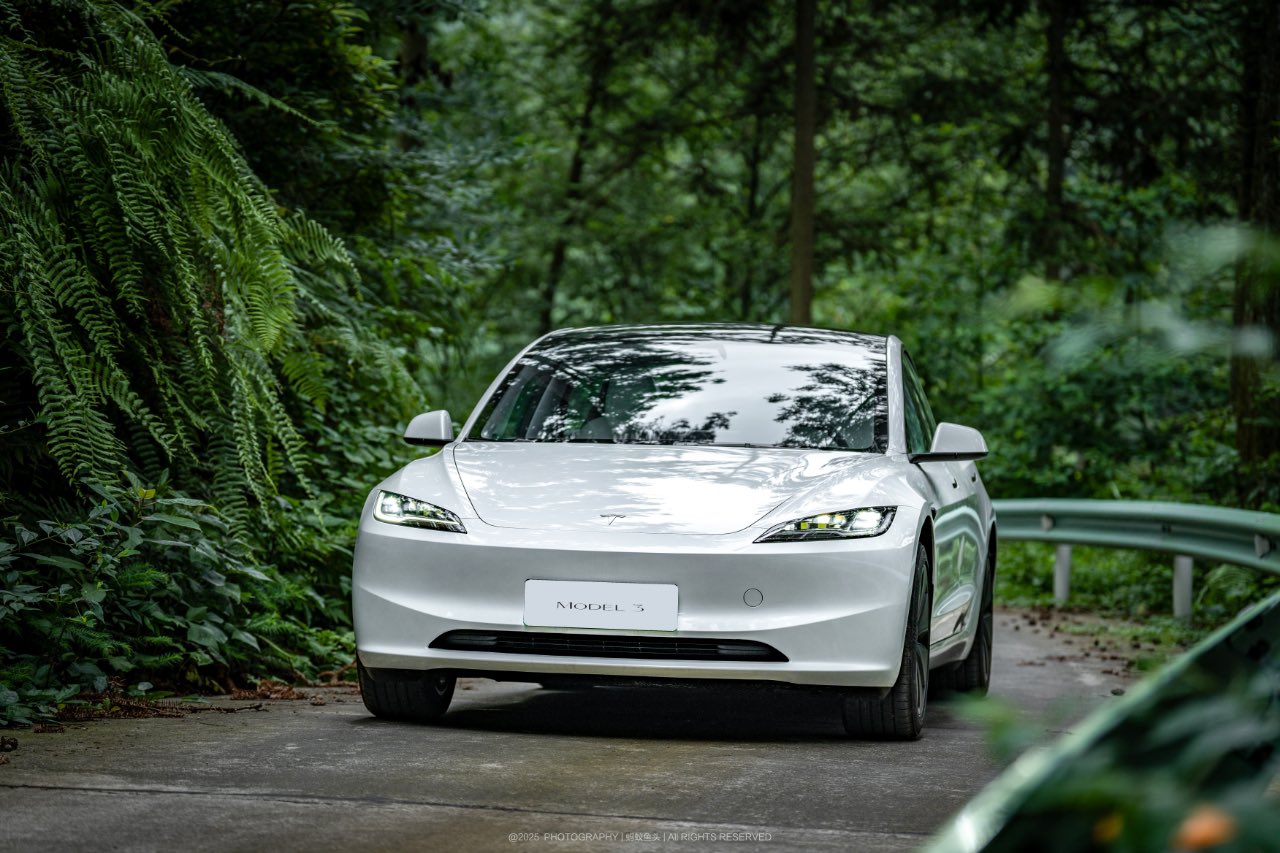
Another Tesla Model 3 variant in China appears to have sold out for January 2026, with the vehicle now showing an estimated delivery date of February 2026 for new orders. This bodes well for the all-electric sedan, which has maintained notable sales despite more affordable rivals like the Xiaomi SU7 and its crossover sibling, the Model Y.
Model 3 LR RWD joins February 2026 queue
A look at Tesla China’s order page for the all-electric sedan shows that new Model 3 Long Range Rear Wheel Drive orders now have an estimated delivery date of February 2026. Priced from RMB 259,500 ($36,810), the LR RWD sits as the second-lowest-priced trim in Tesla China’s four-variant Model 3 lineup. The move follows a similar delivery timeframe for the Model 3 Performance, which remains the most expensive option for the vehicle, as noted in a CNEV Post report.
The estimated delivery dates of the two remaining Model 3 variants remain unchanged for now. The base RWD version, starting at RMB 235,500, and the LR AWD variant, priced from RMB 285,500, both continue to list estimated delivery times of 4-6 weeks. Tesla China, for its part, has continued to list in-stock Model 3 vehicles and is actively encouraging buyers to select inventory units for delivery before the end of the year.
Model Y delays and policy shifts
Delivery timelines for the Model Y in China are also stretching into 2026. All customized Model Y variants now show February 2026 as their estimated delivery date, except for the entry-level version, which still lists January 2026. Tesla has been urging customers since November to prioritize purchasing inventory vehicles, a push aimed at maximizing year-end deliveries.
Timing matters for Chinese buyers due to upcoming changes in government incentives. China’s new energy vehicle purchase tax exemption will be scaled back in 2026, which means customers who take delivery next year could face higher tax costs compared to those who are able to receive vehicles before the end of the year.
As per data from the China Passenger Car Association, Tesla recorded retail sales of 73,145 vehicles in November, down 0.47% year over year. From January through November, Tesla’s retail sales in China totaled 531,855 units, a 7.37% year-over-year drop.
News
Wedbush’s Dan Ives sees ‘monster year’ ahead for Tesla amid AI push
In a post on X, the analyst stated that the electric vehicle maker could hit a $3 trillion market cap by the end of 2026 in a bullish scenario.

Wedbush analyst Dan Ives is doubling down on Tesla’s (NASDAQ:TSLA) long-term upside. In a post on X, the analyst stated that the electric vehicle maker could hit a $3 trillion market cap by the end of 2026 in a bullish scenario, thanks to the company’s efforts to develop and push its artificial intelligence programs.
An aggressive valuation upside
Ives, Wedbush’s global head of tech research, stated in his post that Tesla is entering a pivotal period as its autonomy and robotics ambitions move closer to commercialization. He expects Tesla’s market cap to reach $2 trillion in 2026, representing roughly 33% upside from current levels, with a bull case up to a $3 trillion market cap by year-end.
Overall, Ives noted that 2026 could become a “monster year” for TSLA. “Heading into 2026, this marks a monster year ahead for Tesla/Musk as the autonomous and robotics chapter begins. We believe Tesla hits a $2 trillion market cap in 2026 and in a bull case scenario $3 trillion by end of 2026… as the AI chapter takes hold at TSLA,” the analyst wrote.
Ives also reiterated his “Outperform” rating on TSLA stock, as well as his $600 per share price target.
Unsupervised Full-Self Driving tests
Fueling optimism is Tesla’s recent autonomous vehicle testing in Austin, Texas. Over the weekend, at least two Tesla Model Ys were spotted driving on public roads without a safety monitor or any other occupants. CEO Elon Musk later confirmed the footage of one of the vehicles on X, writing in a post that “testing is underway with no occupant in the car.”
It remains unclear whether the vehicle was supported by chase cars or remote monitoring, and Tesla has not disclosed how many vehicles are involved. That being said, Elon Musk stated a week ago that Tesla would be removing its Safety Monitors from its vehicles “within the next three weeks.” Based on the driverless vehicles’ sightings so far, it appears that Musk’s estimate may be right on the mark, at least for now.
News
Production-ready Tesla Cybercab hits showroom floor in San Jose
Tesla has implemented subtle but significant updates to both the Cybercab’s exterior and interior elements.
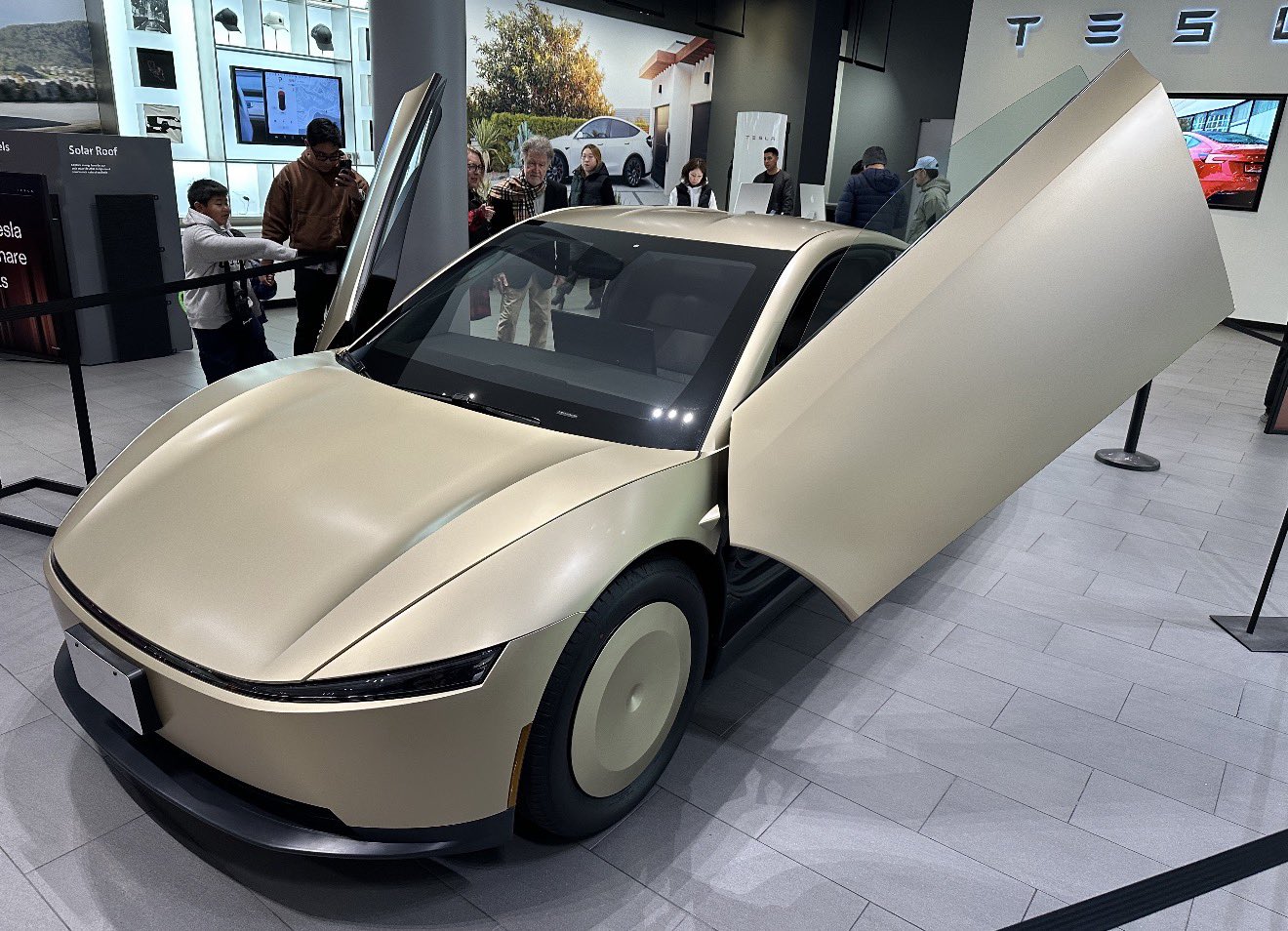
Tesla has showcased what appears to be a near-production-ready Cybercab at its Santana Row showroom in San Jose, California, giving visitors the closest look yet at the autonomous two-seater’s refined design.
Based on photos of the near-production-ready vehicle, the electric vehicle maker has implemented subtle but significant updates to both the Cybercab’s exterior and interior elements, making the vehicle look more polished and seemingly more comfortable than its prototypes from last year.
Exterior and interior refinements
The updated Cybercab, whose photos were initially shared by Tesla advocate Nic Cruz Patane, now features a new frameless window design, an extended bottom splitter on the front bumper, and a slightly updated rear hatch. It also includes a production-spec front lightbar with integrated headlights, new wheel covers, and a license plate bracket.
Notably, the vehicle now has two windshield wipers instead of the prototype’s single unit, along with powered door struts, seemingly for smoother opening of its butterfly doors. Inside, the Cybercab now sports what appears to be a redesigned dash and door panels, updated carpet material, and slightly refined seat cushions with new center cupholders. Its legroom seems to have gotten slightly larger as well.
Cybercab sightings
Sightings of the updated Cybercab have been abundant in recent months. At the end of October, the Tesla AI team teased some of the autonomous two-seater’s updates after it showed a photo of the vehicle being driven through an In-N-Out drive-through by employees in Halloween costumes. The photos of the Cybercab were fun, but they were significant, with longtime Tesla watchers noting that the company has a tradition of driving its prototypes through the fast food chain’s drive-throughs.
Even at the time, Tesla enthusiasts noticed that the Cybercab had received some design changes, such as segmented DRLs and headlamps, actual turn signals, and a splitter that’s a lot sharper. Larger door openings, which now seem to have been teasing the vehicle’s updated cabin, were also observed at the time.








